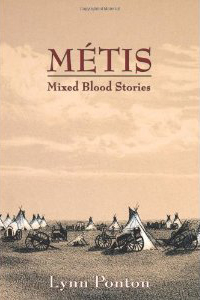Adolescent Psychiatrist Discusses Inspiration Behind New Novel

Lynn Ponton, MD
Lynn Ponton, MD, a professor of clinical child and adolescent psychiatry at UCSF, has written a new novel, “Metis: Mixed Blood Stories,” which tells the coming-of-age stories of four generations of adolescents as they face different challenges during their 16th year.
An expert in teen risk-taking and sexuality, Ponton also is the author of two nonfiction books about adolescent behavior, “The Romance of Risk: Why Teenagers do the Things They Do” and “The Sex Lives of Teenagers: Revealing the Secret World of Adolescent Boys and Girls.”
Ponton will sign copies of her novel at two upcoming local book signings:
- Saturday, April 23, 2 p.m., Book Passages, 51 Tamal Vista Blvd., Corte Madera
- Saturday, June 11, 7 p.m., Books Inc., 601 Van Ness Ave., San Francisco
Ponton took time out to answer these questions about her novel and her life's work.
Q: You have written two nonfiction books, but this is your novel. How is this different?
A: Fiction allows a writer to tell stories that aren’t necessarily topical or driven solely by subject matter. Each of my earlier works utilized a narrative technique to address the experiences of certain adolescents in relation to the overall subjects of the books. In those books, I constructed the stories in the service of addressing specific subject matter – adolescent risk-taking or sexuality. “Metis” tells the stories of four adolescent lives in their 16th year, but the stories serve the characters, instead of the other way around, and though there are certain themes running throughout the novel, I was pulled into the material by the characters rather than any particular subject.
Q: How has your work as a physician for more than 30 years affected your writing?
A: I believe there are many untold stories that we observe in our daily lives as doctors. These experiences provide fertile ground for writing. Yet this same work uses up a lot of the energy and passion that we need to tell stories. I greatly admire the physician writers who have succeeded at this task, such as Anton Chekov, who penned vivid sketches of his medical encounters, and William Carlos Williams, who wrote his poems on his prescription pads. This novel took me a long time to write, and medicine ‘stole’ a significant part of that time. Yet my knowledge and practice of medicine certainly enriches my writing.
Q: Your novel is about a cultural group that you have personal history with. Who are the Metis?
A: The Metis developed as a group in Canada several hundred years ago and were the descendents of Cree and Assiniboine women who joined with French and Scottish men to raise children and shape a hybrid culture in the heart of Canada, much of it now modern-day Manitoba. Several groups broke off and migrated, some to Western Canada, others to the United States. I am descended from a group that moved from Canada to Illinois, where there was already a group of people speaking French and mixed-native dialects, and who shared other cultural similarities with the Metis.
Q: You are very interested in the subject of risk-taking. What role does risk-taking play in the lives of the Metis as a cultural group and in the lives of the adolescents in this book?

A: The Metis culture was founded in an environment of risk and challenge developing in the North American continent, merging different cultural groups and evolving over centuries. Louie Riel, a Metis leader, was hung by the Canadian government, in part because he supported the rights of all people irrespective of color, culture, or ethnicity. This was a great and, until recently, almost unknown risk. The adolescents in my novel also take on great risks, and through that process, they grow and develop.
Q: In “Metis: Mixed Blood Stories,” you continue to be interested in the subject of adolescent identity. Your novel reveals that having a mixed identity doesn’t have to make you mixed-up.
A: I have always been interested in how adolescents construct their identities. It’s no secret that much of the work of adolescence is around identity development and consolidation – who am I, what is unique about me, how do I fit in with my family and with the rest of the world… The four adolescent characters in my book develop or construct their identities in unique ways. Each experiences different cultural, historical and personal traumas. These dramatic events or circumstances are processed in different ways by these young people but, ultimately, they become part of their identities.
Q:“Metis” also vividly describes a culture that honors parents and elders, revealing the important role they play in the lives of teenagers. Is this a special interest of yours?
A: I believe strongly in the parent-adolescent relationship. This bond can be either strengthened or denigrated by the culture in which that relationship develops. For decades I have witnessed parents in the United States struggling with a culture that overemphasizes the role of the media and the peer group, detracting much-needed energy and support from parent-child bonds. The Metis culture is focused on the importance of this bond; I believe it offers much by way of example for parents who are struggling with raising adolescents, including highlighting how parents can and need to change their strategies in an ever-changing world.
Q: Your novel highlights the role of historical trauma in different generations. How is this trauma passed on? How is it overcome? What helps adolescents deal with it?
A: Trauma experienced by groups that is neither addressed nor treated at the individual level often continues to be felt by the next generation even if the insult – a war, for example – ended long before. In “Metis,” the 16-year-old boy, Gilles, is placed in a Chicago orphanage and threatened with a Native American boarding school. This alone is challenging for him, but the impact is heightened because Gilles knows that his uncle, who was placed in a compulsory tribal school, lost his health, traditions, and friends. Gilles is a determined, resilient adolescent who, knowing his uncle’s story, fights harder to not have it become his own. Many adolescents, however, are not able to overcome the traumas that they face and, sadly, succumb. Gilles is helped by his grandmother, Angeline, to avoid the fate of his uncle.
Photo by Classic Kids